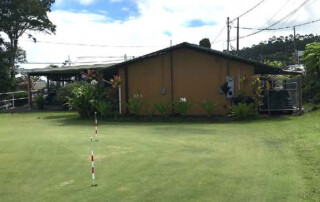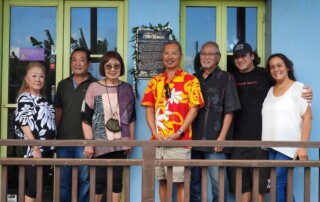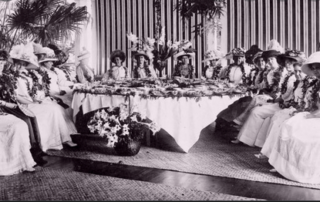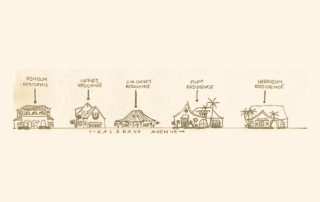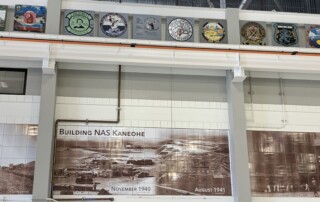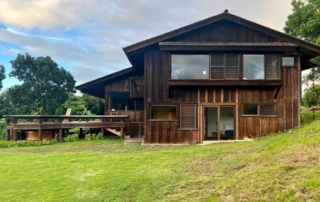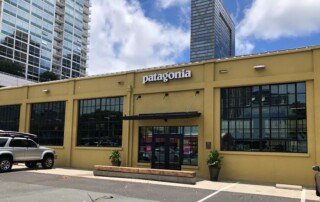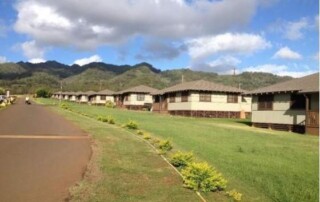Hāmākua Country Club
Address 45-3280 Māmalahoa Hwy, Honokaa, Hawaii 96727 TMK (3) 4-5-004:005 SHPD Historic Site Number N/A Abstract Hāmākua Country Club is a nine-hole golf course with Clubhouse located on a sloping site below the circle island Māmalahoa Highway. The original layout for the golf course was designed in 1929. The property is significant under Criterion A as an example of the evolution of the integration of different ethnic groups into local social organizations and recreational facilities. The Clubhouse was built in 1956 and constructed by Honokaʻa contractor John Yamane at a cost of $15,000. A lanai addition was erected in 1957. The expansive lanai roof is supported by wood columns and ‘ōhi‘a posts. The Clubhouse is significant under Criterion C as a Modern Vernacular wood building with concrete floors, single-wall construction, one-story height, open ceiling rooms showing wood beams and the underside of totan, gable and shed roofs, and seven bays in width with a seven-pile depth. The Clubhouse’s size, 3,096 square feet, illustrates the expansion of membership over the years. Its design elements reflect an evolution from 1920s Plantation Era building designs into 1950s’ ideas that meld outdoor and interior spaces.


